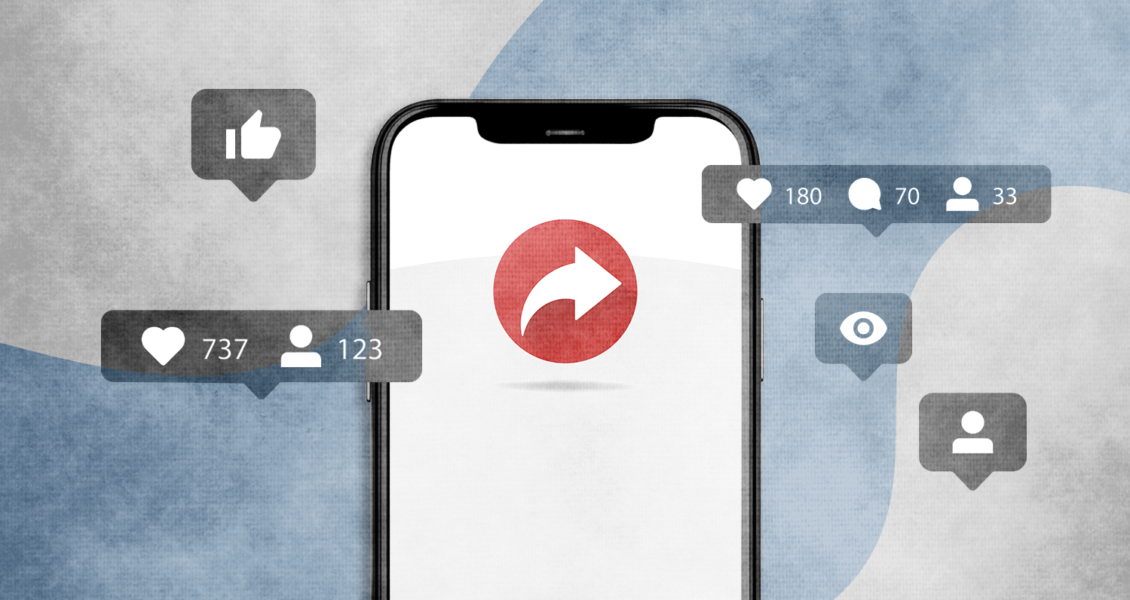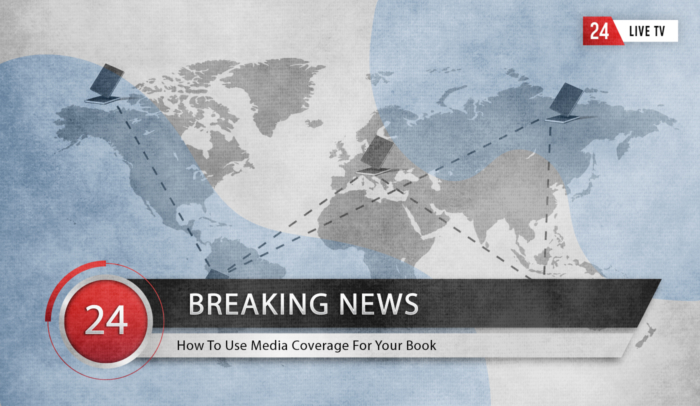If you just landed your first podcast interview, TV spot, or online review, congratulations!
Getting media coverage for your book is always a moment to celebrate.
In the world of self-publishing, where anyone can write and publish anything, it’s important to stand out.
Media coverage helps distinguish you from your competition.
But don’t get too confident yet.
Not all media is created equal. Thanks to the 24-hour news cycle, a media hit can have a short shelf-life.
People are bombarded with content all day long. With that kind of competition for readers’ attention, it’s not enough to just get media coverage. You have to know how to use that media coverage to propel your brand.
People will forget about you if you don’t leverage your coverage to get even more opportunities.
Every piece of media coverage is a chance to connect with your target audience, build your media relationships, and expand your reach.
Ask yourself, do you want media coverage that serves your vanity?
So how do you use media coverage to create actual value instead of just serving your vanity?
The difference comes down to 2 things:
- Being strategic about how you use your book and media coverage to reach your larger goals
- Doing the work necessary to spread the word and keep your audience engaged
In this article, I’ll show you how to do both.
What Are the Overall Purposes of Media?
There are 3 main purposes for media coverage:
- To get you in front of a new audience.
- To increase your credibility with the people who discover you and your book.
- To help your most important contacts keep you in mind.
Let’s go through each purpose separately.
1. Getting in Front of a New Audience
Media coverage can be really useful for spreading the word about your ideas—as long as you set your sights on media that appeals to your target audience.
If you end up in The New York Times, Forbes, or MSNBC, that’s great. But don’t set your sights there to begin with.
Most Authors don’t write bestsellers that appeal to a broad audience.
That doesn’t mean they don’t have successful books.
Some of Scribe’s greatest Author success stories had nothing to do with huge book sales numbers. They depended on making a few consistent sales to the right audience, who then hired them or worked with them in another capacity.
For most nonfiction Authors, selling books is a secondary goal. Your book is a marketing tool to promote you—not the thing you’re actually selling.
Authors’ real goals include using the book to raise their visibility, drive new leads, find new clients, impact others, or get speaking engagements and other opportunities.
Chances are, you won’t accomplish any of that if you’re aiming for a book with mass appeal.
A focused book that speaks to a niche audience is much more valuable than one that will only have marginal appeal to a lot of people.
If you want to succeed in a larger market, you have to succeed with your core audience first.
Once they’re hooked, they’ll do the marketing for you. Word of mouth is a powerful lead generator.
Your job is to think about the outlets that appeal to your “microtribe”—the handful of people who are going to fall in love with your book and rave about it to their network.
Did you write a book for financial planners? Send your pitches to financial planning magazines.
Did you write a book for struggling youth? Reach out to counselors, schools, and education-oriented podcasts.
Honing in on your microtribe helps you build a powerful platform. With time, that platform might land you in front of new and larger audiences.
When Tim Ferriss launched The 4-Hour Work Week, he didn’t set his sights on every white-collar worker with a television set. He started with a tech audience that he knew would get excited about his ideas.
Sure enough, they did, and the book caught on like wildfire.
Media can help you find new audiences—but only if you’ve spoken to your core audience first.
2. Increasing Your Credibility
Right now, the nature of high-earning professionals is changing.
In our parents’ and grandparents’ generation, it was possible to go to college, get a job, and work your way up inside a single company.
Those days are over.
Most professionals are fully independent—meaning they’re a one-off consultant or own a small company—or they’re quasi-independent—meaning they’ll build a career across anywhere from 4 to 10 companies.
It’s a much more competitive landscape. Independent professionals have to find new ways to stand out.
Just by writing a book, you’ve proven that you have novel ideas, passion, and the ability to see a long-term project to completion. But a book with media coverage has an extra seal of approval.
Your book gives people a chance to judge your knowledge.
If your knowledge is impressive enough to earn you a spot on a TV show or in a magazine, your credibility gets an exponential boost. It shows that you are an authority in your field.
Think about it. Who would you trust more? A doctor with a book that didn’t get any reviews? Or a doctor whose book was featured in medical journals and on morning talk shows?
3. Keeping Important Contacts Interested
When you use your media presence right, it can help you stay fresh in people’s minds.
Let’s say someone in your extended network is looking for a business coach. The first thing they’ll do is ask around for suggestions.
You want them to hear your name right off the bat. You also want it to be the name that sticks with them. Ideally, they’ll hear it over and over.
The more visible your media coverage, the more likely it is that people will remember you.
If you’ve got a steady stream of LinkedIn posts, a monthly column in a professional publication, or a regular guest spot on a podcast, people will be more familiar with your work.
You won’t be that great business coach they heard about five years ago, whose name they can’t remember.
You’ll be that great business coach who’s always on the radio, who wrote that really insightful piece on LinkedIn last week, or who gave great advice in Forbes last month.
A continued media presence helps you stay relevant. You want to be the first person people think about when they need your services.
Anything that gets other people talking about you and your ideas is a great marketing tool.
Media coverage can also keep you on top of your current clients’ minds.
If you’re doing a great job, and they hear you give a great interview on a podcast, they may be motivated to send a link to their network: “Hey, this is the person I was just telling you about. They’ve done a great job with our company!”
When you get good press, it reflects well on your clients. They like sharing in your glory too.
The Most Effective Tactics to Achieve These 3 Goals
Of course, every Author’s strategy will look different depending on their goals, audience, book subject, and market position.
But there are 9 tried-and-true tactics you can use to make sure your media is serving these 3 goals.
- Post your media coverage
- Create shareable content
- Make the most of your Amazon page
- Add a media page to your website
- Keep your information up to date
- Share everything on social media
- Add media to your prospecting email blast
- Add your hit to your email signature
- Share your media hit internally
Here’s how these simple actions can help you leverage your media coverage and fulfill your objectives.
1. Get in Front of a New Audience
Post Your Media Coverage
One way to get your book in front of a new audience is to post your media coverage in forums frequented by your target audience.
Maybe you have a video of a talk you gave or a link to an interview. Consider posting that content on Reddit, submitting it to a professional website, or sending it to people who host other sites with relevant content.
You can also run paid advertisements for your book.
Whatever forum you choose, here’s my advice. Stick to an editorial message, not an advertorial one.
Do you like it when people blatantly try to sell you things?
No. Everyone hates that.
If you go on a forum and say, “Buy my book. Here’s the link,” most people will get annoyed or ignore it.
No one cares about your sales pitch. They care about learning something helpful or new.
Capture your audience’s attention with information that provides value. They’ll be more likely to read your book, visit your website, or hire you.
Create Shareable Content
You can get more mileage from media coverage by finding new ways for people to share your ideas.
For example, you could start a blog related to your book, write articles for LinkedIn, or create graphics with pithy quotations for people to share on Facebook.
Whatever medium you choose, be sure to refer to your media coverage in a footer. Keep it short, like “Jane Doe, author of So-and-So Book, as seen in Forbes.”
People are more likely to share a link on Facebook or hit “retweet” than they are to plug an entire book. A single Instagram post might get thousands of impressions, where your book’s Amazon page alone might get only one or two.
With shareable content, the people who are truly interested will click through to find out more about your message.
Remember: the goal isn’t to get as many “likes” and shares as possible. You’re trying to spread your message to an audience that will take action.
Position all of your media so it speaks to the right audience and advances your objectives.
Every Author has a goal in mind when they write their book. Maybe you want to grow your business or recruit twenty new clients.
Whatever your goal is, keep it in mind as you build your marketing and media strategy.
For every pitch, interview, or piece of shareable content, ask yourself, “Will this media outlet help me meet my goals? Does it target my customer? And how can I expand its reach to my desired audience?”
2. Increase Your Credibility
Make the Most of Your Amazon Page
If you receive prominent or glowing media coverage, choose a good quote, and add it to your book’s Amazon page.
That way, every potential buyer can read about your book’s success.
Media blurbs signal that a book—and its Author—are important. They also help readers recognize that a book is relevant to them.
Aside from reviews, media coverage and endorsements are some of the most powerful drivers of sales.
If you haven’t done it yet, also be sure to add your book’s blurbs to your Amazon page. A recommendation from a respected figure in your field goes a long way toward building your credibility.
Add a Media Page to Your Website
Once you start getting media coverage, add a media page to your Author website.
A virtual “newsroom” is a great way to showcase all your press.
Include links to every interview, mention, quote, and important social media interaction as a way of building up a media profile.

Media often works like a magnet. Once you’ve gotten some press, you can build on that foundation and get more.
A media page speaks to two different groups:
- It advertises to potential clients and readers that you’re a credible authority.
- It shows media outlets that you’re an expert with experience speaking on camera, on mic, or in front of audiences.
There are plenty of people who can run a business but can’t keep listeners or viewers interested. Your media page signals that you have the skills to reach people—outside the pages of a book.
If it’s a big-name outlet, consider paying them to display their logo on your website.
Logos offer quick brand recognition and immediate validation, which is helpful for prospects surfing your site. At a glance, people can learn more about who you are and what you have to offer. Plus, logos add a nice graphic element.
Keep Your Information up to Date
If you were featured in a prominent outlet, make it known.
Change your Author bio on all your social media accounts, your Amazon page, and your website. If you have an X account (formerly Twitter), consider making the coverage a pinned Tweet.
Your readers should be able to see that you’ve been on CNN or that you landed a New York Times review, no matter what platform they follow you on.
Marketing your book, just like marketing your brand, is an evolving process. It’s not something you do once and forget about. Keep all your information up to date.
3. Stay at the Top of Your Contacts’ Minds
Share Everything on Social Media
Sometimes, the hardest thing to market is yourself.
If you struggle with self-promotion, it helps to stay focused on your goal.
For example, maybe you want to grow your business so you can help more people. That won’t happen if no one knows who you are.
In order to reach your goals, you have to share your media coverage with everyone you know via your social media channels.
You can’t just email your spouse the good news about your latest interview and hope the rest of the world stumbles across it online.

Sharing your media coverage isn’t a sign of ego. It’s a sign that you want to grow your business.
Of course, there are good ways and bad ways to share.
Treat your media opportunities like a valued relationship.
Express gratitude. Tag the media outlet and reporter. Thank them by name.
Media isn’t purely transactional. Just like any other part of business, it’s about building an ongoing relationship with people.
Over time, that relationship could lead to you being a regular source for commentary. That means more press that you don’t have to initiate.
Journalists are judged by how much traffic they generate these days. So, when you share and encourage engagement in your own networks, you’re actually signaling something important to the journalist too. You’re telling them you have a shared commitment to success.
If you want more information on social media for Authors, here’s our go-to social media guide.
Add Media to Your Prospecting Email Blast
If you already have a newsletter or a regularly scheduled email communication, add a section on recent press and link your coverage.
That advice comes with 2 caveats:
- Don’t create a newsletter just for that purpose. You should only send a newsletter if you’re willing to commit to sending it regularly and have interesting content to share. Half-hearted newsletters reflect poorly on an Author. And if it’s only filled with press, it might come across as too blatantly self-promotional.
- Don’t create a separate email blast for each piece of coverage. People will get annoyed if you fill their inboxes on a daily basis.
Add Your Hit to Your Email Signature
Chances are, you send dozens of emails every day. Every one of those emails is a potential marketing opportunity.
If you landed a solid piece of media coverage, add it to your email signature.
Keep it simple. Try something like, “Read my latest Forbes column,” or “Book Title: Named one of the top 14 books to read this summer by Inc. Magazine.” Or just write the article’s title and outlet name.
Be sure to add a hyperlink.
It may seem basic, but sometimes, the easiest steps are the most effective.
This allows everyone you’re in contact with to see your latest press. It’s also a great conversation starter with existing customers or potential new customers.
All it takes is one click for people to forward the link. This can easily—and almost instantly—expand your reach.
Share Your Media Hit Internally
Sometimes Authors miss the most obvious opportunities to promote their work.
Don’t forget about your internal audience.
Share your media coverage with your company so they can use it.
Tap your employees and ask them to share glowing press coverage. This is a great way to expand your reach and extend the shelf-life of your media coverage.
Give your sales team access to all your recent media coverage. I know it seems like a no-brainer, but a lot of businesses fail to follow through.
There should be a symbiotic relationship between your sales and media team.
Your sales team is on the front lines, talking to potential customers. They know what pains and questions those customers have.
By regularly connecting with your sales team, you can get accurate, up-to-date information about what topics your audience wants to hear about.
Incorporate those talking points into your interviews.
Then, when the piece is published, you have a relevant sales tool for your team.
Strategy and Diligence are a Recipe for Success
Media coverage can be an important asset for Authors looking to expand their network.
But remember, the most impactful coverage is not always the most glamorous. Some of the best media coverage happens in trade publications and niche markets.
That’s why it’s so crucial to be strategic about how you’re using your book and media coverage to reach your larger goals.
Do you want to build your business? Do you want to attract more clients? Do you want to expand your speaking career? Do you want to bring new investors on board?
Carefully consider what you want your book to achieve, and then tailor your media targets to make sure you’re addressing those goals.
Then, once you’ve got the coverage, do everything you can to spread the word.
Build long-term relationships with journalists and media outlets. Stay current and relevant by engaging with your audience. Be consistent with putting out new content and provide valuable content to your network.
The greatest Author successes come from a combination of strategy and diligence.


